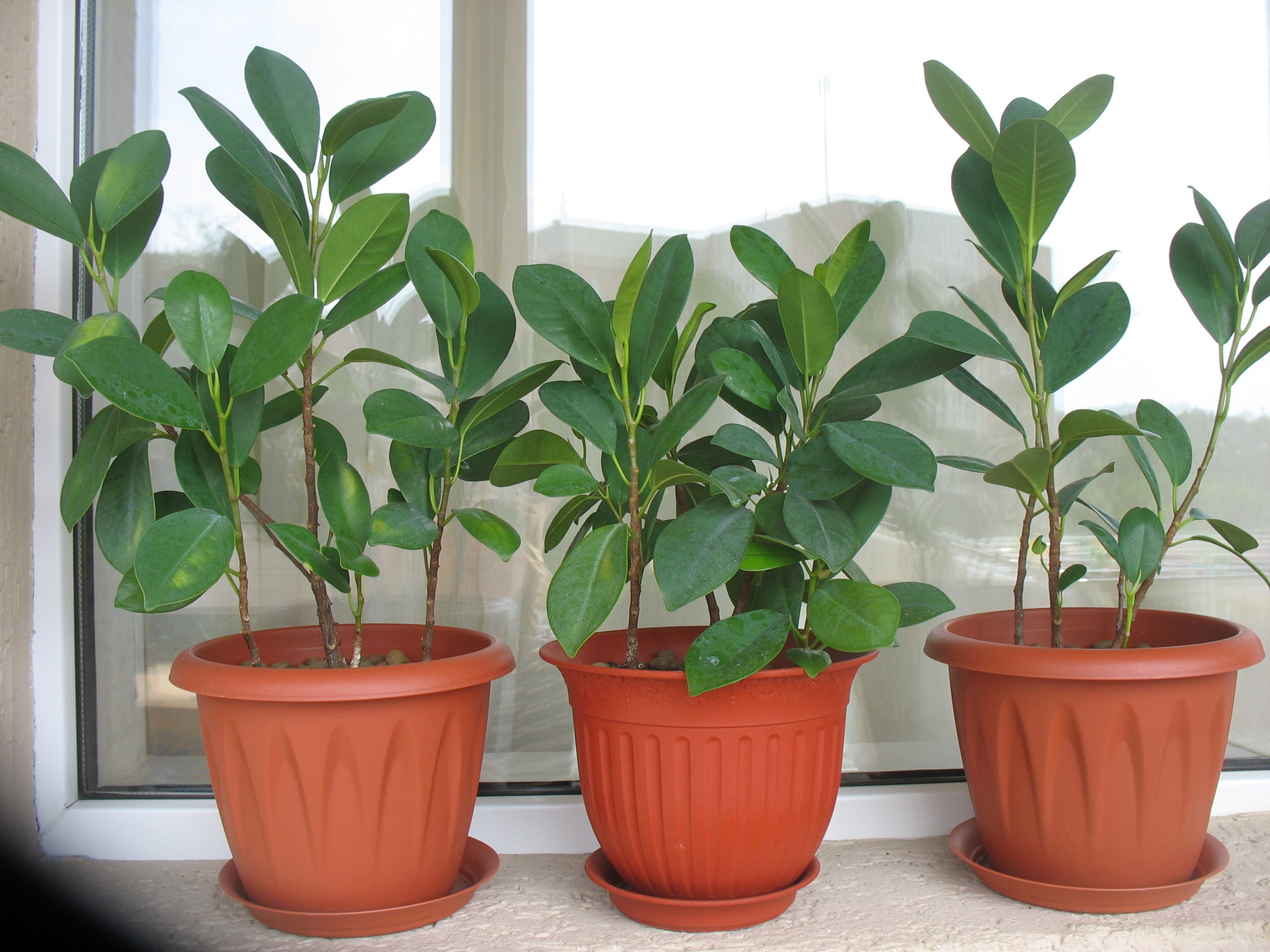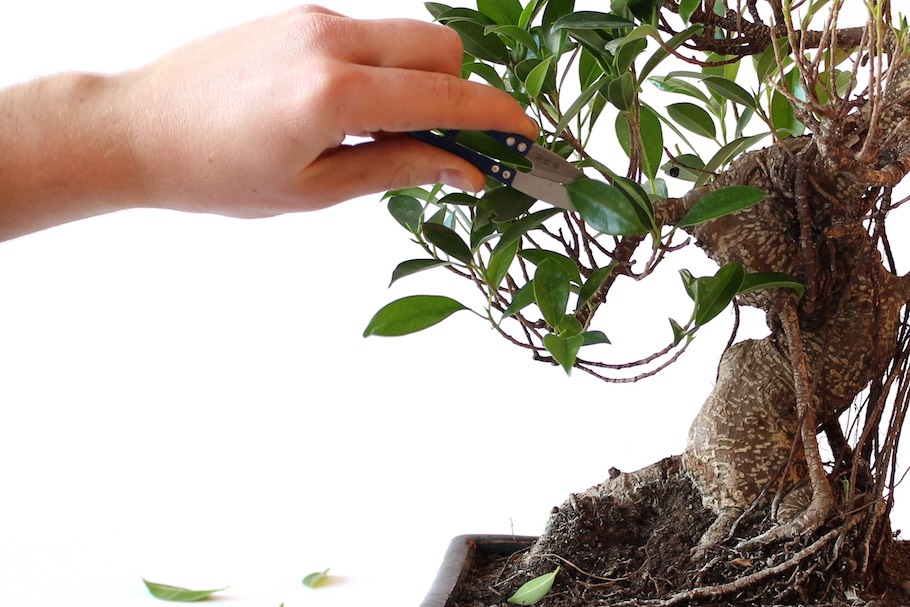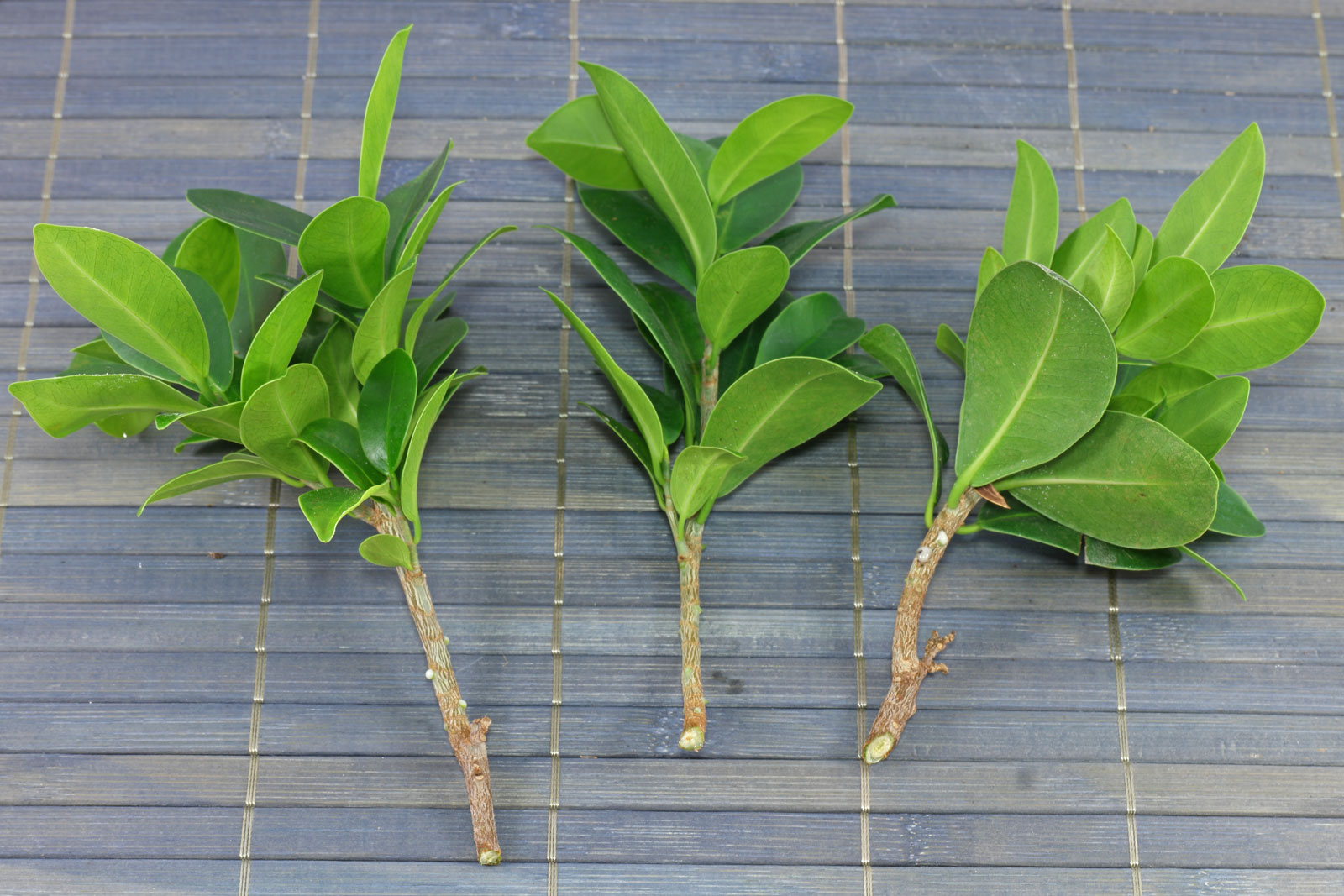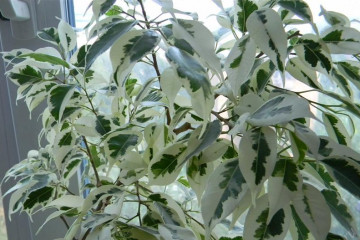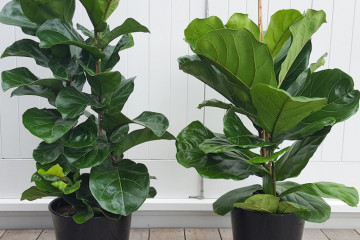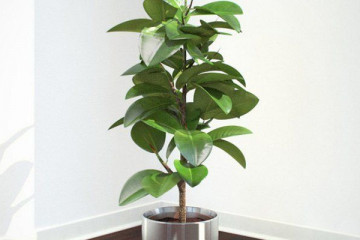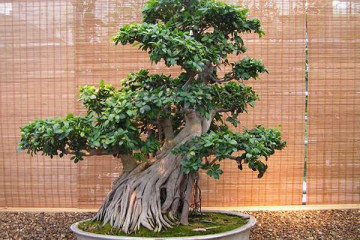Ficus Moklame - home care
Content:
Ficus Moklame has a compact crown and unpretentious care. But still, there are a number of features in the conditions of keeping this plant, you need to know about them.
What does Ficus Moklame look like, which family does it belong to
Ficus Mokleim (Latin ficus Microcarpa Moclame) belongs to the Mulberry family. It is a dwarf plant species that is often used in home interiors and landscaping. The main difference from other representatives of ficuses is that this species has an aerial root, and the leaves are more round in shape. At home, Moklame grows a little more than 1 m.
Briefly about the history of appearance
Warm countries with a humid climate are considered the homeland of this species of ficus. In its natural environment, the plant grows quite tall.
Ficus Moklame care at home
In order for a plant to grow and develop well, it needs to create optimal conditions.
Temperature
In summer, ficus feels best at a temperature of + 24 ... +30 degrees. In winter, it can be lowered to +15 degrees. The main thing is to prevent hypothermia of the pot. If it blows from the windows in winter, then the container with the flower must be rearranged to a warm place.
Lighting
Ficus Microcarpa Mokleim does not like when it is often rearranged to new places and the lighting is changed, so it is worth choosing an ideal place for a flower in advance. The plant prefers diffused light.
In winter, the flower will need additional lighting. Every evening, you need to turn on fluorescent lamps for several hours.
Watering
Watering should be moderate. In summer, the soil is irrigated no more than 2-3 times a week. In winter, the amount of watering is reduced.
Spraying
In summer, you need to take care of a flower differently than in winter. As often as possible, foliage should be sprayed and dust-free. Especially if the container is on a window with open windows.
Humidity
The air in the room should be humidified within 50-70%. If it is too dry, you can put a plate of wet expanded clay next to the flower. In winter, the humidity is increased by hanging wet towels on the radiators.
Priming
Ficus prefers neutral or slightly acidic soil.
Required soil composition:
- coarse sand;
- sod land;
- leafy soil.
All ingredients must be taken in equal amounts.
Top dressing
Ficus Moklame needs fertilization in summer and spring. In winter, you need to give the flower a rest. In the spring, you can apply a universal fertilizer for indoor plants. In summer, nitrogen-containing substances are used.
Features of care in winter, dormant period
In winter, the amount of irrigation should be reduced. Water the soil when it is completely dry. Also, in winter, no fertilizers are applied and lamps are installed for additional lighting.
When and how it blooms
Like most varieties of ficuses, the Moklame variety does not bloom.
Pruning
When grown in a house, ficus needs pruning to form a crown. Otherwise, he will grow very tall.
Procedure for trimming:
- Wait for the main stem to grow up to 20 cm.
- Then cut off the central shoot.
- Cut off lateral shoots after they grow higher than the central one.
For trimming, you need to use only a sharpened secateurs so that there are no creases at the cut points. It should also be disinfected beforehand.
How Ficus Moklame reproduces
The reproduction process of a plant is simple. For cultivation of ficus, seeds, cuttings or air layers are used.
Germinating seeds
Seeds are sown in the ground at the end of February - mid-April.
Sowing process:
- Scatter the planting material over the surface of the moistened soil.
- Sprinkle lightly with soil.
- Cover the container with a bag and place in a warm place.
- Water the soil and ventilate it several times a week.
When the first shoots appear, the film is removed. The pick is carried out after the first pair of full-fledged leaves have bloomed.
Rooting cuttings
The easiest way to grow a new plant is from cuttings. As cuttings, lignified shoots are used, 10-15 cm long.
Description of the grafting process:
- Cut the underside of the cutting at an angle of 45 degrees.
- Wash off any juice that flows out.
- Tear off the lower leaves and shoots.
- Place the cutting in the water so that the leaves do not touch it. Otherwise, they will start to rot.
- Add 1 tablet of activated carbon to the water.
After about 2-3 weeks, the first roots should appear. After that, you can plant the cutting in the ground. The plant is transplanted into a permanent pot after 3 months.
Air layering
Reproduction process by air layers:
- On an adult ficus, choose a lignified shoot.
- Select an area and cut off all the leaves from it.
- Make a ring cut above and below this location.
- Remove the bark.
- Sprinkle the selected area with crushed charcoal or Kornevin.
- Spread the moss on the bag and wrap the area with it. Commit the package.
After a while, roots should appear. After that, the package is carefully removed, and the layering is planted in the ground.
Transfer
Reasons for the transplant:
- The root system has grown a lot.
- The roots are visible from the pot.
- The root system began to rot.
- The pot is too small.
The transplant is carried out in the spring or summer. Once a year, the ficus is transplanted into a larger pot so that the flower can grow further.
Possible growing problems and diseases
When growing ficus Moklame, you can face a number of problems caused by pests, diseases or improper care.
The flower sheds buds and leaves
Leaves can fall off naturally. But if they fall massively, then you need to look for a problem. This could be due to pot rearrangement, drafts, or sudden temperature changes.
Leaves turn pale
Foliage can begin to fade due to poor lighting, constant overflow of soil and chlorosis.
You can make your own chlorosis medication. This will require citric acid, ferrous sulfate and boiled cooled water. Dissolve 4 g of citric acid and 2.5 g of vitriol in water. Stir the solution thoroughly. Spray diseased plants with it. The solution is stored for 2 weeks.
The tips of the leaves dry
The tips of the leaves usually begin to dry out in winter when the heating is turned on. This is due to a sharp drop in the level of humidity. It is necessary to move the pot away from the battery and place a container with wet expanded clay next to it.
The lower leaves fall
The lower leaves usually fall off when the deciduous mass changes. But it can also be due to improper watering, lack of fertilizer, temperature changes and drafts.
Pests
Frequent pests of ficus are scale insects, spider mites and mealybugs. If insects are found, the leaves of the plant must be wiped with soapy water and treated with Actellik. When a spider mite appears, the air humidity should be additionally increased.
Other problems
Other growing problems:
- Fungal diseases arising from cold watering.
- The appearance of brown spots due to dry air.
- Slower growth due to lack of nutrients.
- Ficus can lose its decorative effect due to the lack of trimmings.
Signs and superstitions
It is believed that the ficus in the house brings good luck to its owner or mistress. It is believed that the plant helps to improve the material condition of the owner.
Ficus Moklame is a very beautiful plant that will look harmonious in any interior. The flower is very unpretentious and, if properly cared for, it will grow for a long time.
